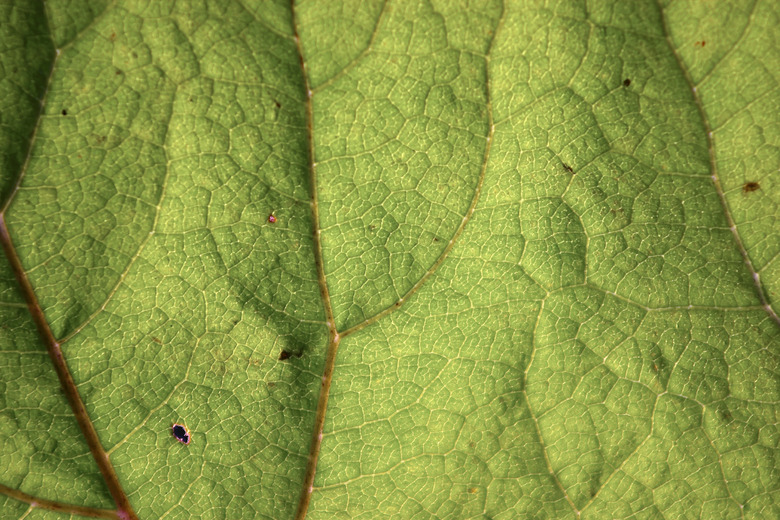How To Make A Plant Cell Out Of Recycled Materials
Plant cells are basic and microscopic components of plant life. Unlike animal cells, which have no specific shape due to the flexible skin surrounding their anatomy, the internal organs of plant cells are contained inside a rigid structure called a cell wall. This gives the plant cell its essentially rectangular shape. These tiny, elementary units of plant life are too small to see, so it is useful to create scale models to study their anatomy. Many recycled materials serve as good representations of plant cell organs, which are called organelles.
Step 1
Nail together four pieces of recycled plywood with recycled steel nails so that they form a rectangle a few inches deep. To the bottom of this rectangle nail a broader piece of plywood so that you create an open, box-like structure. Line the bottom and the interior walls with a thick, recycled plastic garbage bag. The plywood represents the cell wall, a rigid structure that gives the plant cell its structure. The plastic bag symbolizes the cell membrane, which is essentially the skin of the plant cell that adheres to the cell wall.
Step 2
Pour recycled or reclaimed water into the plant cell model. The plastic bag should retain the water. This represents cytoplasm, the fluid in which the organelles of a plant cell are suspended.
Step 3
Drop a recycled stress-reliever ball into the water. This will represent the nucleus, a spherical organ inside the plant cell which control many functions of the internal organelles. Next, dip a small bag made of recycled plastic into the water and tie it shut after it has filled with fluid. This stands for the vacuole, a large organelle filled with fluid.
Step 4
Crumple together several post-it notes made of recycled paper and drop them into the water. These will represent the golgi body, which prepares carbohydrates and proteins so that they can be sent out of the cell. Nearby, drop some recycled glass beads. These will symbolize ribosomes, small organelles that synthesize proteins.
Step 5
Place a few recycled plastic wall hangers in the water. These resemble the shapes of mitochondria, rod-shaped organelles which help turn glucose into usable energy for the plant cell.
Step 6
Cut strips of recycled cardboard and let them fall into the water near the nucleus. These symbolize the endoplasmic reticulum, which transport substances throughout the cell's anatomy. Cut some oval strips from this cardboard and color them green with recycled markers. Put these in the water to symbolize the chloroplasts, organelles which convert sun light into energy.
Things Needed
- Plywood
- Hammer
- Recycled Steel Nails
- Recycled plastic bag
- Water
- Recycled stress ball
- Small recycled bag
- Recycled post-it note paper
- Recycled glass beads
- Recycled plastic wall anchors
- Scissors
- Recycled cardboard
TL;DR (Too Long; Didn't Read)
Check labels carefully to determine that a product has been recycled or contains recycled matter. For instance, many plastic bottles carry numerical symbols which only mean that they can be recycled. That is not proof that the bottle itself is made of recycled material.
Warning
Recycled water has been treated to make it usable for irrigation and non-potable purposes. Do not ingest this water accidentally.
Cite This Article
MLA
Paxton, Robert. "How To Make A Plant Cell Out Of Recycled Materials" sciencing.com, https://www.sciencing.com/make-plant-cell-out-recycled-materials-12098092/. 24 April 2017.
APA
Paxton, Robert. (2017, April 24). How To Make A Plant Cell Out Of Recycled Materials. sciencing.com. Retrieved from https://www.sciencing.com/make-plant-cell-out-recycled-materials-12098092/
Chicago
Paxton, Robert. How To Make A Plant Cell Out Of Recycled Materials last modified March 24, 2022. https://www.sciencing.com/make-plant-cell-out-recycled-materials-12098092/
